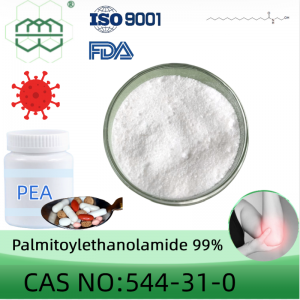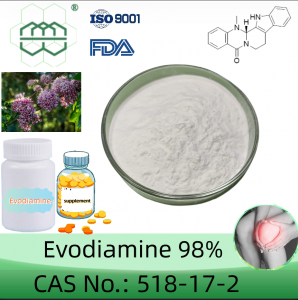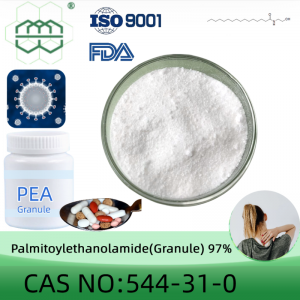Methylthioninium Chloride CAS No.:7220-79-3 Detoxification and anti-inflammation.
Product Parameters
| Product name | Methylene Blue ; Methylthioninium Chloride |
| Other name | Methylene Blue trihydrate |
| CAS No. | 7220-79-3 |
| Molecular formula | C₁₆H₁₈CIN₃S·3H₂O |
| Molecular weight | 373.9 |
| Purity | 99% |
| Appearance | Dark green to dark brown solid powder |
| Packing | 1kg/bag, 25kg/barrel |
| Application | Dietary Supplement Raw Material |
Product introduction
Methylthioninium Chloride is a dark green to dark brown solid powder. Its aqueous solution is sky blue. Its core characteristic is the dual nature of REDOX coloration - it remains stable blue in an oxidizing environment and turns colorless under reducing conditions. The medical field focuses on specifically marking nerve and lymphoid tissues during the operation to enhance the accuracy of the operation. The blue staining phenomenon of body fluids is used to assist in identifying ureteral fistula or bladder integrity, providing visual support for medical assessment. At the same time, it can regulate the function of peripheral nerve ion channels to alleviate perceptual abnormalities and play a regulatory role in the microbial environment. It should be stored away from light.
Feature
(1) High purity: Methylene blue can be produced into high-purity products through a refined production process. High purity means better bioavailability.
(2) Physical properties: It is stable in air but needs to be stored in a sealed container away from light. It is readily soluble in water and ethanol, soluble in chloroform, but insoluble in organic solvents such as ether and benzene
(3) Chemical properties: It can act as a reducing agent at low doses and as an oxidizing agent at high doses
Applications
1.aid detoxification:
For the physiological imbalance caused by abnormal hemoglobin status and exposure to specific chemical substances, the REDOX process is regulated through intravenous intervention
2. Surgical and diagnostic assistance:
a) Intraoperative local application can specifically bind to target structures such as nerves or lymphatic vessels (such as sentinel lymph node localization in breast cancer), assisting in intraoperative target recognition and improving operational accuracy
b) After intravenous application, the blue staining phenomenon in body fluids (urine) provides a visual reference for the assessment of urinary system integrity
3. Anti-infection and anti-inflammation:
0.1% solution, when in contact with the bladder environment, affects the microbial environment, or when in local contact with chronic wounds (such as diabetic foot ulcers), promotes the tissue repair process through its antibacterial and REDOX properties.
















